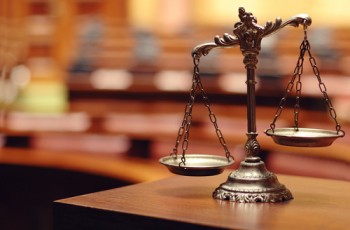Law Prof Sees More Plagiarism, Allows Do-Overs
An adjunct law professor who has taught at three law schools says he has caught a half a dozen students who plagiarized parts of their papers, and the problem seems to be increasing.
Donald C. Dowling Jr. tells the ABA Journal that he first caught plagiarism in 2002 and gave the student an F. Since then, he’s caught about five others, two or three of them in the last year. He puts the incidence of plagiarism at about 10 percent, since he has caught about six instances of copying out of slightly more than 60 papers graded.
He no longer flunks the students. Instead, he allows the students a do-over and a chance for a decent grade. “Lately I’ve kind of gotten the message that the schools don’t like it if you flunk these kids,” he says. “I got the strong sense” that the accommodation was thought to be fair, he adds, “even though I had a bad taste in my mouth.”
He settled on the new course of action after administrators asked him how he would like to handle the problem. There is apparently no protocol, he says. While his first report of plagiarism in 2002 brought a serious response and a call from the law school’s lawyer, nowadays he gets the feeling administrators feel he’s making too big a deal out of plagiarism.
“I don’t think schools like flunking kids out; I think schools are judged by their graduation rates,” he says. “Schools are not in business to be flunking kids, I guess.”
Dowling has taught in summer abroad programs at the University of Cincinnati College of Law and at Hamline University School of Law, and as an adjunct at the John Marshall Law School in Chicago. He doesn’t want to specify where he has caught the problem, and adds that other law schools are also likely dealing with plagiarism. And he suspects attitudes are changing elsewhere, as other law professors dealing with increased plagiarism become slightly less concerned about the issue.
Dowling now tells his students about the student who received an F for plagiarism, but they still feign ignorance about the ethical issues when he catches plagiarized passages in their papers. He says he questions whether there is plagiarism when a paper isn’t in the student’s voice. At that point, he will put the suspect passages into Google.
He has saved the plagiarized papers, and he reads some of the purloined passages in the ABA Journal interview. One came from the website of the National Employment Law Project. Another came from a paper by the Canadian law firm Fraser Milner Casgrain.
Dowling wrote a letter to the New York Times about his students’ copying after reading its Aug. 1 article about students who fail to grasp that plagiarism is a serious misdeed. According to the story, the Internet may be redefining how students “who came of age with music file-sharing, Wikipedia and Web-linking” understand the concept of authorship.
Dowling asserted that copyright violations become “a secondary issue when a student submits a paper to an audience of just one, with no expectation of pay.” A bigger concern, he says, is fraud on the professor.
“Think about that duped professor, up late in bed grading a well-plagiarized paper, haplessly scribbling ‘Great point!’ or ‘Trenchant analysis!’ or just ‘Yes!’ but inadvertently critiquing the thought of some Wikipedia-page writer or author of some decades-old book review,” Dowling wrote. “Our professor—whether he awards the paper an A-plus or a B-minus (pretty much the full spectrum in today’s grade-inflationary economy)—is a chump wasting his time evaluating the wrong person’s ideas and crediting a thief.”



